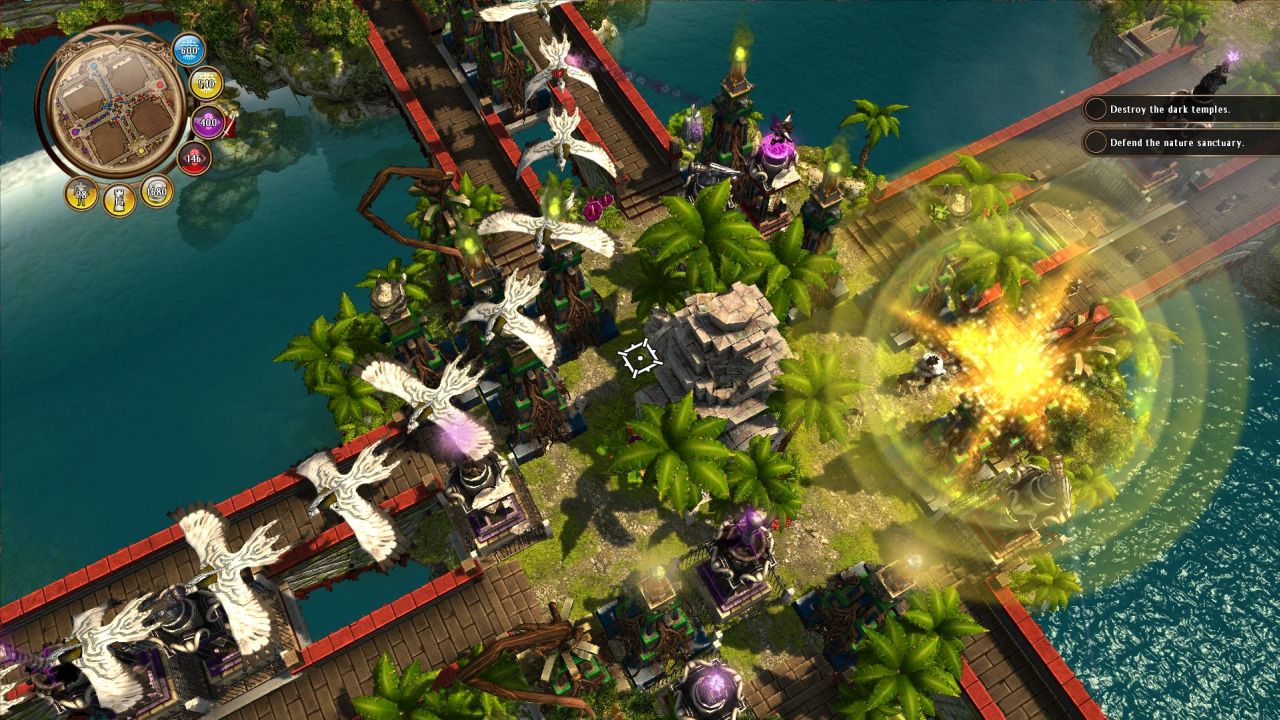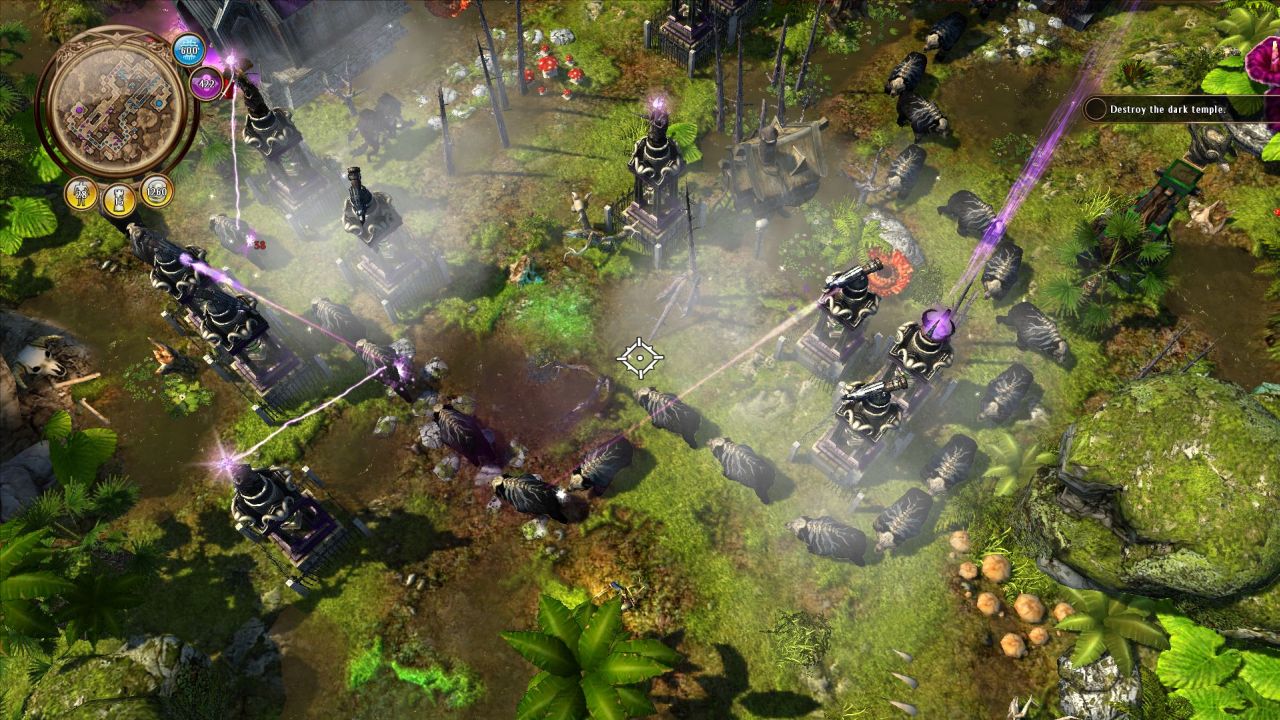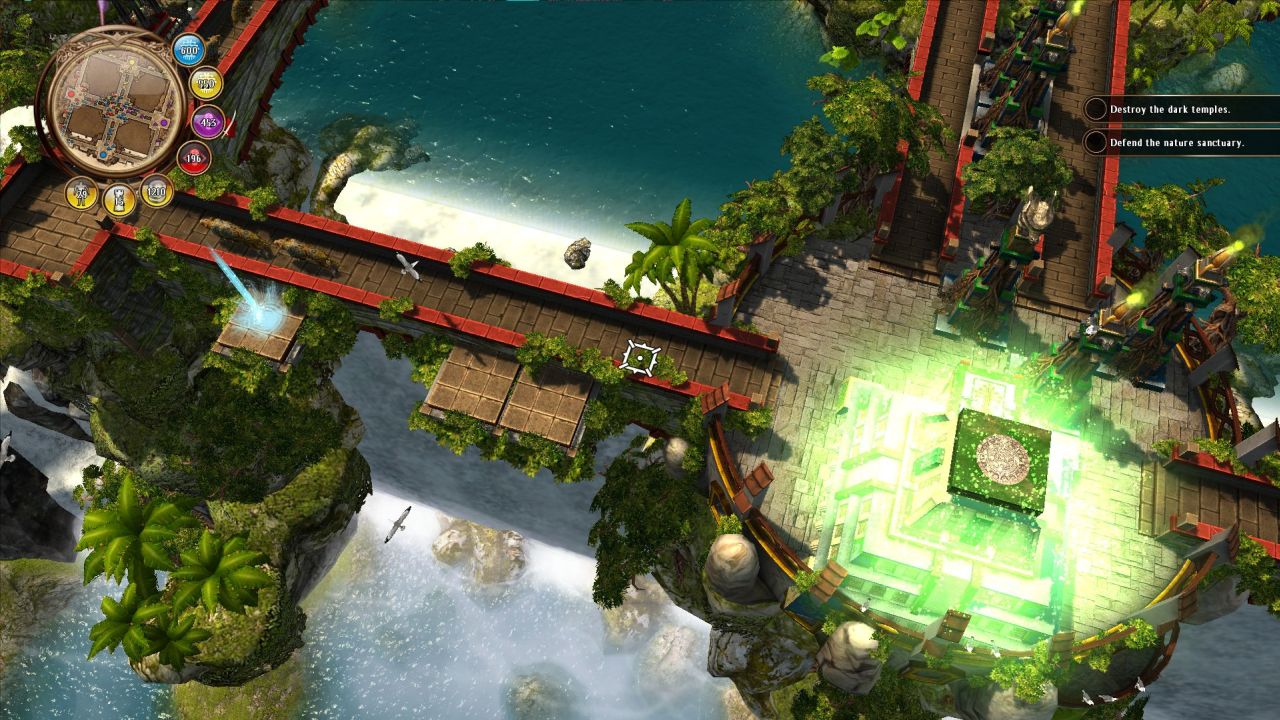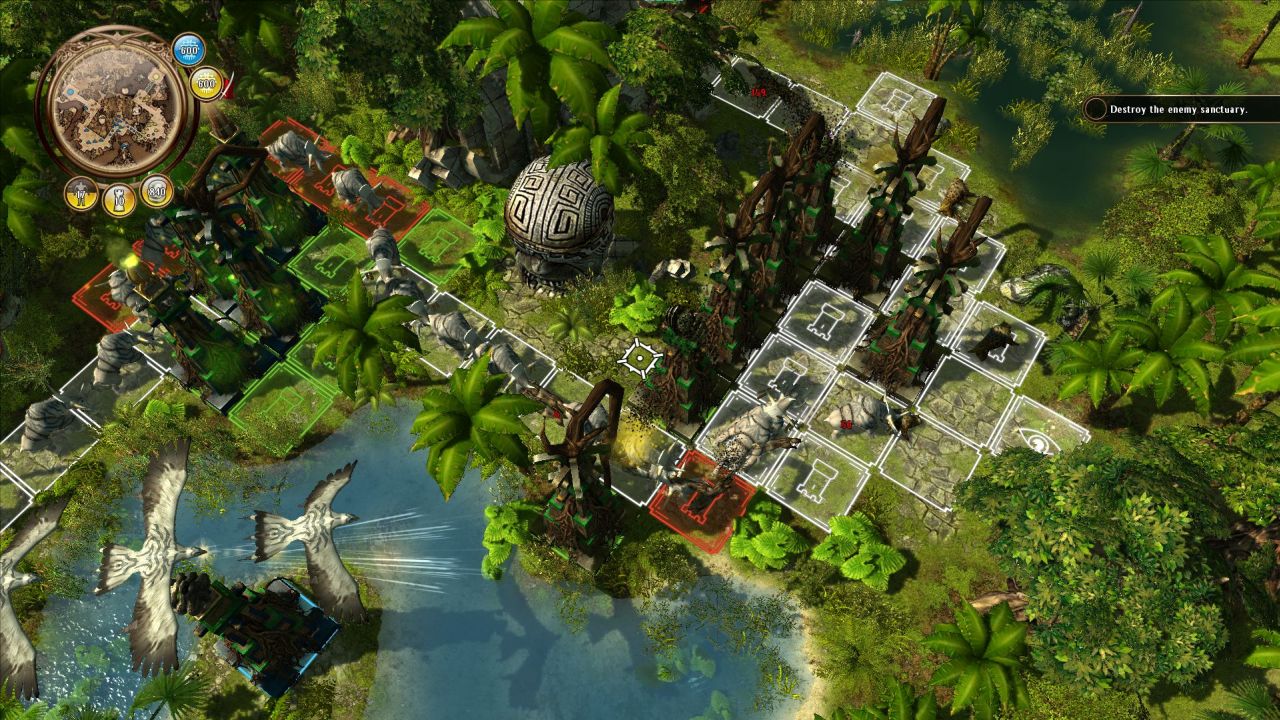Defenders of Ardania Review
Posted by
FiverBeyond
on
In the gaming universe, evolution doesn’t always proceed from simple to complex: sometimes we like to think of the history of gaming as starting with the basic block shapes of Pong and Breakout before slowly progressing to the more complex joys of Super Mario Brothers platforming and finally ending with, say, Everquest. The tower defense genre is a fun violation of this natural progression, as it’s an entire genre of gaming that was spawned simply from a fun bonus level in Warcraft III. Since then, there have been dozens, maybe hundreds of incarnations of this most simple concept: swarms of units with varying attributes are traveling slowly down a twisting road to your base, and your sole defenses are the projectile-flinging towers that line the road (but, of course, may never block it).

The genre has seen something of a climax with Defenders of Ardania, a mid-priced title from Paradox Entertainment. Here the standard tower defense setup has been expanded: not only do you need to defend your base from incoming swarms, but you may also generate units of your own to attack the enemy. Both building towers and producing units costs resources, so every expenditure in defense has an opportunity cost. The best part of this game is undoubtedly the beautiful visuals, which follow the high standard of quality set by other Paradox games. Levels take place over sprawling waterfalls or lush jungles with a variety of interesting configurations and setups to play. At the beginning of each campaign level, it will do the player good to pause the game for a second simply to look over the map and take note of the possibilities open to them. What choke points can you create? Which target is your highest priority? Another strong point of the game is the complex layered nature of gameplay. Whereas most tower defense games include one or two innovations that make them stand out from the crowd, Defenders goes one step further by including six or seven of the best ideas. Flying units, hero units, multiple goals, and the ability to change the course of enemy units by considered tower placement, all play a role in the winning strategy.

Complex gameplay is a hallmark of Paradox-developed titles, but it does have its drawbacks. One small issue is that such a complex game system seems to sometimes allow loopholes to be exploited against the AI. On some levels, I had a difficult time beating the AI when I approached the level in a straightforward do-as-expected gameplay… but when I realized that I could instead ‘cheese’ my opponent by simply spamming my swarming units early in the game, forcing the AI to overcompensate by building only towers effective against that unit type, at which point I could finish them off by suddenly switching to a different unit. A human opponent could immediately realize the trick I was playing (and punish me for my lack of defense), but the AI isn’t well prepared for that kind of unorthodox gameplay. Multiplayer is noticeably better in this respect as playing with random strangers on the internet quickly teaches you how to respond to these shallow tactics.
This depth of gameplay is also held back by the fact that some key details of your units and towers are missing from your tooltips and info screens: you’ll have to flip through the in-game unit guide for the full information. For example, one of the offered towers doesn’t attack enemy units at all, but the player is informed via tooltips that instead it “boosts resources”. I played through the entire campaign assuming that these simply provided a flat increase in your rate of mana accumulation, only to find out at the end that these towers technically only boosted the resources gained from killing enemy units within a certain range of the tower. How much advantage does it grant you? What is its range? Those are details that you’d need to look up in the guide.

The story in Defenders is a very straightforward humdrum affair, roughly equal to what you might find on the back of a good box of cereal. One bright spot in this respect is the voice acting, which is so deliberately over-the-top and exaggerated that you can’t help but chuckle at how ardently the mediocre lines are given. Your starting ‘advisor’ has a Scottish accent that wants to give Sean Connery a run for his money, as you progress through the levels of the campaign, you pick up additional characters who seem to get almost progressively more melodramatic. Voice-acting notwithstanding, the story remains bland and unfunny, which is only emphasized at the very end of the campaign, where it suddenly takes a wonderfully farcical and nigh-sarcastic turn. The sudden change in tone is jarring, and it was so enjoyable that you can’t help but wonder why the entire game wasn’t made like this: if you’re going to be a silly fantasy, you might as well be a hilariously goofball fantasy. The tone in Defenders of Ardania is like a boring bedtime fairy tale that throws in a single page of Terry Pratchett at the end.
While playing Defenders of Ardania in single player mode is moderately fun, the multiplayer simply isn’t very fulfilling at all. Although there are technically three separate races, they are for the most part re-skinned copies of each other. The online community is very small, not giving much variety in terms of opponents, and splitting games into two unsatisfying types: games against newcomers (who pose no challenge) games against veterans (who usually follow a standard, predictable format, winning by wearing the opposing player down, rather than creative tactical gameplay).

Defenders of Ardania is not the best tower defense game that I’ve ever played, but it’s definitely the most thorough. Most TD games have missed opportunities by leaving out innovations in the genre: hero units, interesting maps, the ability to change routes by using towers as blocks, focused fire… Defenders has all of these. But when it really gets down to it, the game still feels fundamentally held back by its simple nature: in the end there’s only so much that you can do with tower defense to keep it interesting. Even with the added layers of complexity to the game (and the much needed fast-forward capability), I found myself sometimes feeling bored as I slowly upgrade all of my towers and units before I could wear down my opponent. With almost no online community to provide worthy opponents, and little to recommend the game in other creative areas, Defenders of Ardania turns out to be only a cleaned up, spiffy-looking version of a free, flash game standard.
